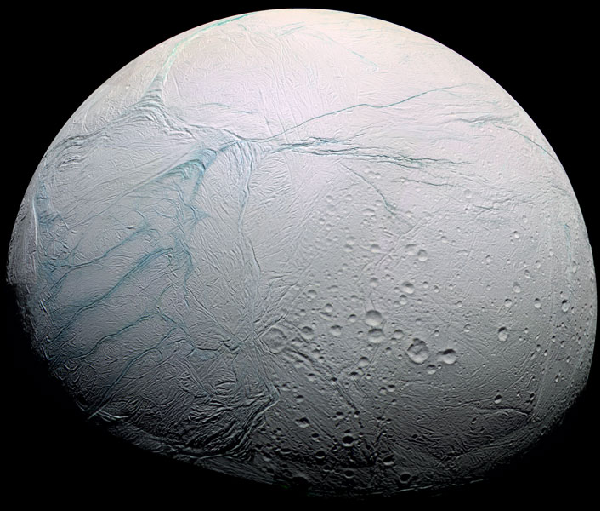101 Erupting Geysers Discovered on Enceladus
| Paula Marie Navarra | | Jul 29, 2014 11:52 AM EDT |
Scientists have found 101 geysers erupting on Saturn's icy moon, Enceladus, suggesting it's possible for liquid water to reach from the moon's underground sea all the way to its surface.
Cameras onboard the Caasini Saturn Orbiter surveyed the south polar terrain of Enceladus for seven years, where it discovered the location of individual geysers coincident with small hot spots.
Like Us on Facebook
This discovery revealed the mechanism by which Enceladus released most of the material making up Saturn's E ring.
Enceladus is a unique geological basin renowned for its four prominent tiger striped fractures.
It is the sixth-largest moon on Saturn and was discovered by William Herschel in August 28, 1789. Very little is known about Enceladus until two Voyager spacecraft passed it in the 1980s.
Enceladus was first observed during a Saturnian equinox, like many Saturnian satellites discovered during that time.
Researchers compared the geyser's locations with thermal emission maps because the greatest geyser activity coincides with the greatest thermal radiation.
They found out that geysers and tidal stresses have a connection but this correlation is insufficient to answer its production process.
Carolyn Porco from the Space Science Institute said this finding means that geysers are not near surface phenomenon, but have a much deeper root.
Through analysis of the gravity data gathered by Cassini, researchers concluded that the sea beneath the ice shell was the only plausible source of material ejected by the geysers.
Researchers also found that if the narrow pathways were filled with liquid water, the ice shell can remain open from the sea all the way to the surface.
They also said that as Enceladus orbits Saturn, the brightness of its plume formed through all the geyser periodically changes.
©2015 Chinatopix All rights reserved. Do not reproduce without permission
EDITOR'S PICKS
-

Did the Trump administration just announce plans for a trade war with ‘hostile’ China and Russia?
-

US Senate passes Taiwan travel bill slammed by China
-

As Yan Sihong’s family grieves, here are other Chinese students who went missing abroad. Some have never been found
-

Beijing blasts Western critics who ‘smear China’ with the term sharp power
-

China Envoy Seeks to Defuse Tensions With U.S. as a Trade War Brews
-

Singapore's Deputy PM Provides Bitcoin Vote of Confidence Amid China's Blanket Bans
-

China warns investors over risks in overseas virtual currency trading
-

Chinese government most trustworthy: survey
-

Kashima Antlers On Course For Back-To-Back Titles
MOST POPULAR
LATEST NEWS
Zhou Yongkang: China's Former Security Chief Sentenced to Life in Prison

China's former Chief of the Ministry of Public Security, Zhou Yongkang, has been given a life sentence after he was found guilty of abusing his office, bribery and deliberately ... Full Article
TRENDING STORY

China Pork Prices Expected to Stabilize As The Supplies Recover

Elephone P9000 Smartphone is now on Sale on Amazon India

There's a Big Chance Cliffhangers Won't Still Be Resolved When Grey's Anatomy Season 13 Returns

Supreme Court Ruled on Samsung vs Apple Dispute for Patent Infringement

Microsoft Surface Pro 5 Rumors and Release Date: What is the Latest?










